This blog teaches how to fix your posture.
The entire process of how to fix your posture I’ve successfully used with hundreds of clients. Moreover, good posture prevents injuries. And improves sports performance by using your body ergonomically.
The thing is though, you only do sports a couple of hours a week. Work, on the other hand, 40 hours?
That’s why your sitting posture at work is important. Manage well how you sit during the day, and you don’t notice it’s negative effects during sports at night.
That’s why in this blog, we dive deep into sitting and posture.
But before we start, do you know how to sit right?
I think I know, but I still find it hard.
That’s why in this blog, I concentrate on how to fix your sitting posture.
First, I’ll show which postures are a result of sitting incorrectly. After I’ll show the right posture. And finally, we’re going to fix your posture with quick and easy stretches and strengthening exercises.
- Why is Posture Important?
- Static & Dynamic Postures
- Why do you Develop a Bad Posture?
- Types of Bad Posture
- Bad Posture Symptoms
- Correct Posture
- How to Improve your Posture?
- Good Posture Exercises
- Conclusion
1. Why is Posture Important?
Posture is important because it makes sure that the right parts of your body are used at the right moment. As things go, every task, be it sitting, standing, cooking, or playing soccer, requires a different posture.
Each time your body functions to serve that specific task best. Moreover, it’s beneficial to understand that your body always works against gravity.
Without gravity, the story of posture would be entirely different. Because, why do you need to sit up straight if there’s no force pushing you down? And, why do you need to lean back to kick a ball into the air, if there’s no force stopping the ball from going up?
As a result, when it comes to posture, your body looks for the path of least resistance between the following factors:
- The task at hand
- Your muscular strength at that moment
- Gravity
The importance of posture is, therefore, to efficiently resist gravity while doing the task at hand. While exhausting your body as little as possible.
In an earlier blog, I identified posture as one of the habits that drain your energy quietly.
2. Static & Dynamic Postures
You can divide postures roughly in 2 categories:
- Static Postures. Lying, sitting, and standing.
- Dynamic Postures. Walking, running, jumping, kicking, and throwing among others.
Static Postures
Static postures are postures you keep over a prolonged period. You move little and your body looks for balance. Static postures allow you to relax, but at the same time are prone to the forces of gravity.
As things go, the same muscles, need to work continuously to keep you sitting or standing up straight.
Dynamic Postures
Dynamic postures are multiple postures after each other.
Just like static postures, dynamic postures are best done in specific ways:
- Walking with your back straight
- Walking fast with your back straight but with a slight bend in the hips to maintain counterbalance your velocity
How Static Postures Influence Dynamic Postures
Each type of posture has a function in your daily life. However, our sedentary lifestyles of today have made the amount of time we spend in static postures (mostly sitting in chairs) more prevalent.
Chairs aren’t great for your posture. Even if you sit correctly, over time the muscles of your legs will still shorten because of your bend hips, knees, and feet.
Does that mean your back is safe?
No, unfortunately it’s not.
The muscles of your legs are connected to your pelvis which is the base of your spine. Shortened leg muscles will change the posture of your spine. If not while your sitting, then as soon as you stand up.
Thus, if you are in static postures for prolonged periods your body adapts to that posture. That’s great for sitting, but not for playing soccer or working out in the gym.
3. Why Do you Develop a Bad Posture?
You develop a bad posture for several reasons:
- You perform a single task often in an incorrect way. Like, not sitting straight because your monitor is too low and your too high.
- Lack of instruction. This often feeds into the point above. No-one educated you on the correct lifting posture, sitting posture, or standing posture. As a result, you do it the way that costs you the least energy.
- Weak postural muscles. To maintain a correct posture, you need to train your postural muscles. The best way to do this is to use the correct posture with whatever you do. However, you need to know what the correct posture for your task is, and practice.
Remember how I said before that your body chooses the posture that costs the least energy?
That’s when you don’t force it to do otherwise.
If you didn’t train yourself to use the correct sitting posture it won’t be the easiest one. As a result, your preferred posture is one that harms you.
That’s why it’s important to train your postural muscles and to sit right. Because the more you practice the easier it gets.
And the easier it is to sit right, the more you will sit right.
4. Types of Bad Posture
These are the types of the bad posture you see most:
- Forward Head Posture
- Hyper Kyphosis or Rounded Upper Back
- Round or Hyper Lordosis of the Lower Back
- Flat or Hypo Lordosis of the Lower Back
Forward Head Posture
A forward head posture is a posture fault of the neck. It occurs as a result of sitting a lot in front of a monitor.
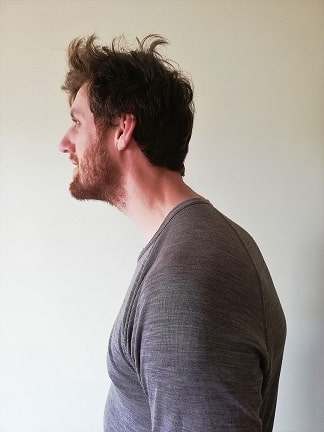
Nowadays, there’s another type of forward head posture. As a consequence of frequent mobile phone use. It’s called “text-neck”.

Muscles that shorten:
- Suboccipital muscles (the ones right under your skull)
- Sternocleidomastoids
- Scalenes
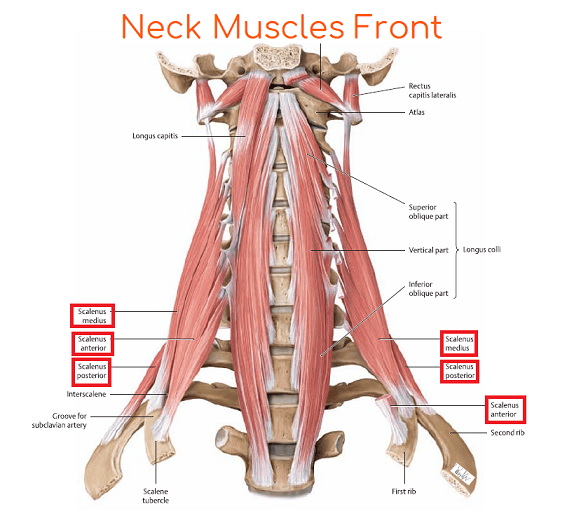
Muscles that lengthen:
- Descending Trapezius
- Levator scapulae
- Erector spinae
Hyper Kyphosis of the Upper Back
A rounded upper back often comes together with a forward head posture. Because one compensates for the other.
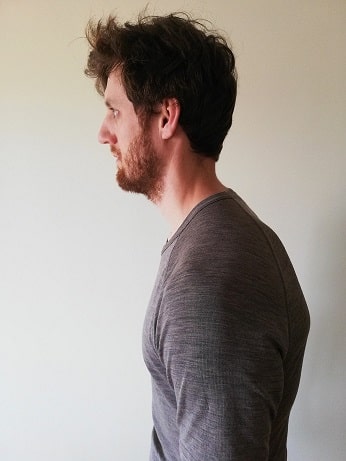
Muscles that shorten:
- Pectoralis minor
- Pectoralis major
- Rectus abdominus
Muscles that lengthen:
- Erector spinae
- Rhomboids
- Transverse Trapezius
Hyper Lordosis of the Lower Back
An arched lower back is a result of overextending your lower back.
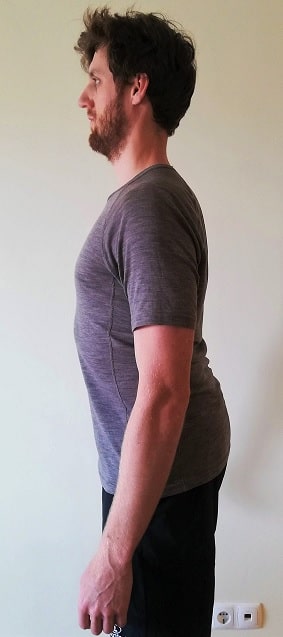
Muscles that shorten:
- Iliacus
- Psoas major
- Quadratus lumborum
Muscles that lengthen:
- Rectus abdominus
- Obliques
- Transverse Abdomen
If you want to know more about hyperlordosis read this blog by a colleague Physical Therapist about how to fix a hyperlordosis.
Hypolordosis of the Lower Back
A flat lower back is the opposite of a rounded lower back. It’s a consequence of slouching in your chair.
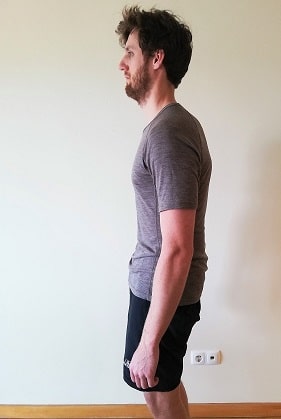
Muscles that shorten:
- Hamstrings
- Rectus abdominus
- Obliques
- Transverse Abdomen
Muscles that lengthen:
- Quadratus lumborum
- Erector spinae (lumbar part)
5. Bad Posture Symptoms
The most obvious symptom of bad posture is your posture.
Make a photo from the side at hip height while you sit or stand comfortably. This will help you to understand your posture. Even when you don’t feel any of the symptoms I describe below.
Stiff & Tense Muscles
Each inefficient posture results in certain muscles that lengthen and others that shorten.
The muscles that shorten get tense. But the ones that lengthen (often) too. As things go, the muscles that lengthen aren’t in their ideal position to perform their task.
Test this for yourself: try to carry something heave while standing straight. In what position are your elbows? Somewhere between a 50-90-degree angle (bend). This means that your arm flexor, the
biceps, is short.
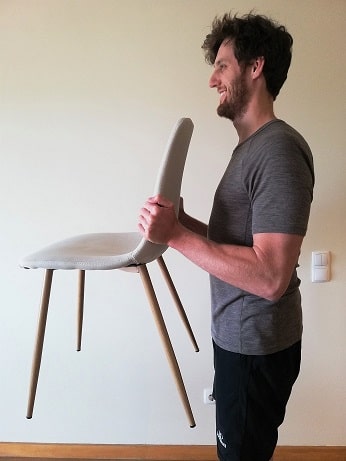
Now try to carry the same item with your arms almost fully extended.
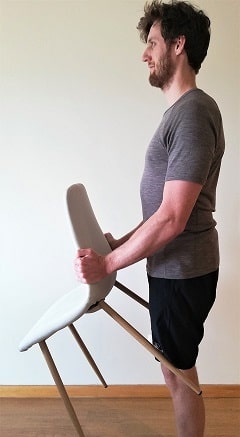
It’s harder, isn’t it?
This is what happens with your postural muscles too. The ones that lengthen have to carry loads in an inefficient position. This is tiring and results in weak and tense muscles.
(Radiating) Pain
Pain can be the step after the discomfort I described before. Besides that, these things can provoke radiating pain:
- Trigger Points. Knots in your muscles that become spastic follow predictable pain patterns.
This is an excellent guide to trigger points and how to release them.
- Nerve entrapment. A spinal disk can compress a spinal nerve or, for example, a hypertense muscle like the scalene, due to forward head posture.
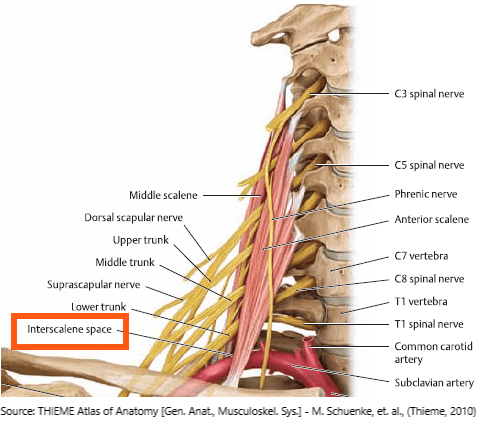
Reduced Mobility
Can’t you squat down all the way?
Can’t you touch your toes?
Can’t you raise your hands straight above your head while standing straight?
These are all signs that your posture might be compromised.
Difficulty Breathing
Tense muscles don’t allow your abdomen and ribcage to expand as much. As a result, you can’t breathe as deep.
And, that’s it. Enough about bad posture.
Are you ready to learn everything about good posture?
6. Correct Posture
This is the correct sitting posture:
Your ears are in line with your shoulders. And your shoulders are in line with your pelvis. Your hips are flexed 90 degrees and your knees as well. Your abdomen is active (pull your belly button in slightly) as is your upper back to keep your shoulders back.
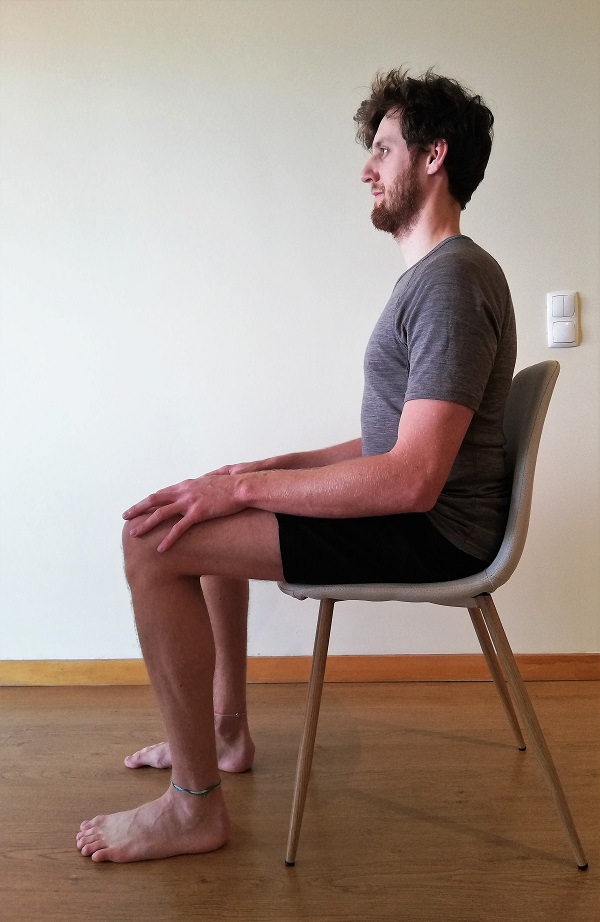
Which Muscles are Important for Correct Posture?
The most important muscles for correct posture are the ones that prevent you from falling into the common postural faults.
Thus, in sitting:
- To pull your neck back:
- Longus colli
- Rectus capitis

- To pull your shoulders back:
- Rhomboids
- Transverse and Ascending Trapezius
- For your lower back:
- Multifidi
- Transversus Abdominus
- Glutes

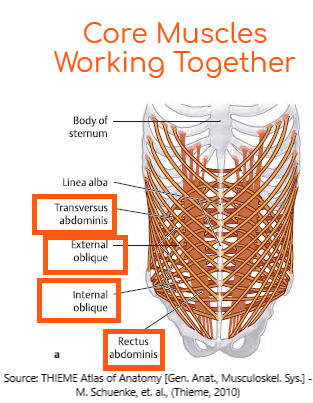
7. How to Improve Your Posture?
To fix your posture, it’s important to strengthen the muscles that are long due to bad posture. And to lengthen the muscles that are short due to bad posture.
I will concentrate on 3 specific areas:
- The neck
- The upper back and shoulder girdle
- The lower back
8. Good Posture Exercises
With these good posture exercises you know exactly how to fix your posture.
How to Fix you Posture: Start with Deep Breathing for Relaxation
Deep breathing is a quick and easy way to reduce tense muscles throughout your body.
Lie down on your back and place one hand on your stomach and the other on your chest.
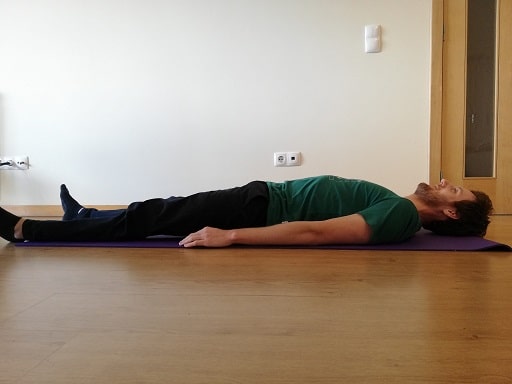

Do full inhalations followed by full exhalations. Repeat 15-20 times.
After this exercise, the other postural exercises will be more effective.
How to Fix your Posture: Stretching
Neck Flexor Stretches for Forward-Head Posture
Position your hands on your collar bone and press down lightly. Move your head laterally and rotate it to the other side. Breathe deep 5-10x. Repeat on the other side.
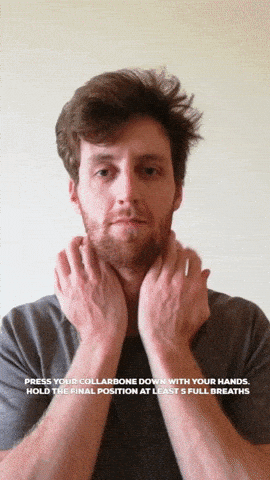
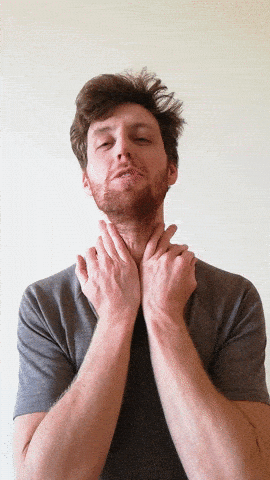
Stretches for Rounded Shoulders and a Rounded Upper Back
Pectoralis Major Stretch
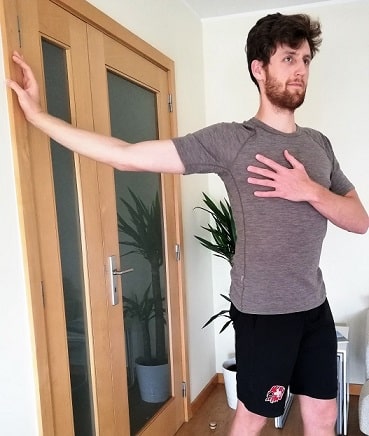
Pectoralis Minor Stretch
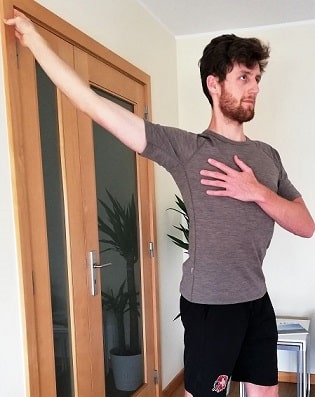
Stretches for Hyper Lordosis
Hip Flexor Stretch

Quadratus Lumborum Stretch
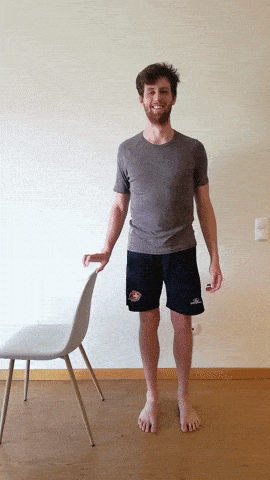
How to Fix your Posture: Kinesthetic Awareness
Kinesthetic awareness means you can feel the position of your joints. It’s essential to change your posture.
Because, how do you know if your posture is good or bad if you can’t feel the position of your joints?
When your posture is off, you get used to the position and don’t feel it’s wrong.
Thus, it’s important to improve your sensitivity to joint positioning.
Protraction & Retraction of the Cervical Spine
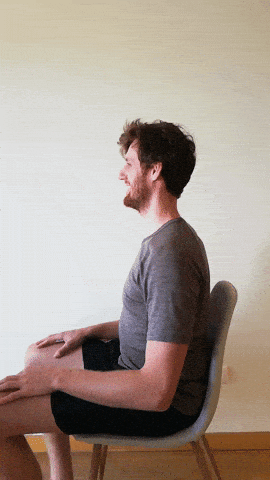
Nutation/Contra Nutation of the Pelvis
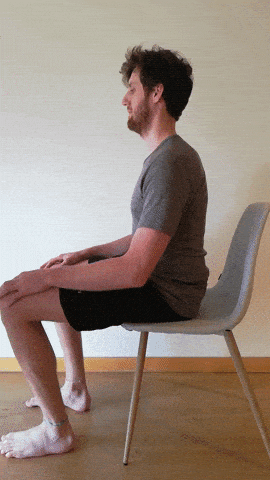
Core Exercises for Posture
These are my 3 favorite core and spinal stability exercises to fix your sitting posture.
Sitting Knee & Arm Raise
Start this exercise with alternating arm raises. Then, alternating knee raises. And finally, both like in the gif below.
Be cautious of you head position.
Do you see how mine is wrong in the beginning?
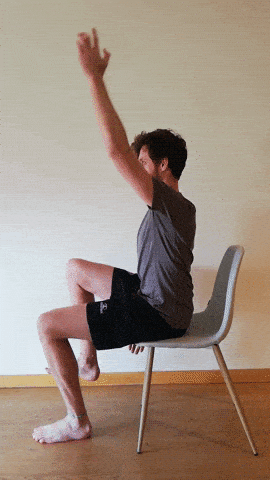
Quadruple Leg & Arm Raise
Again, start only by alternating your arms. Then, only your legs and then both. Only progress once you’ve mastered the exercise.
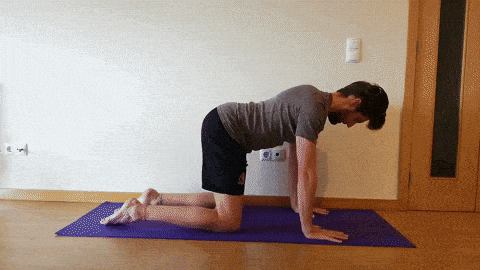
Dead Bug
My favorite core exercise of all time. Lie down on your back with your knee bent. Press your spine down and keep it in that position while you move your legs.
Once you can do this 15-20x without moving your spine, put your hands in the air. When you lift your left knee lower your right arm. Alternate while keeping your lower back on the floor.
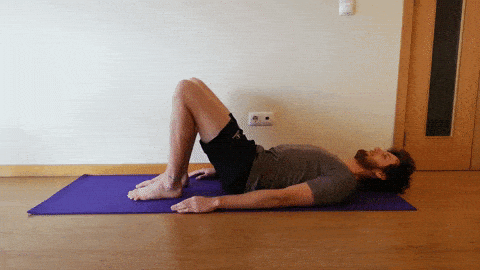
9. Conclusion
This blog gave a complete overview of common postural mistakes due to sitting and how to fix them.
The benefit of fixing your sitting posture ensures your body moves freely once you demand more. During sports, hobby, and lifting.
Now I want to ask you. Did you discover a postural fault? How did you discover it?
Tell me in the comments down below which symptoms you had and how you’re improving your posture now.


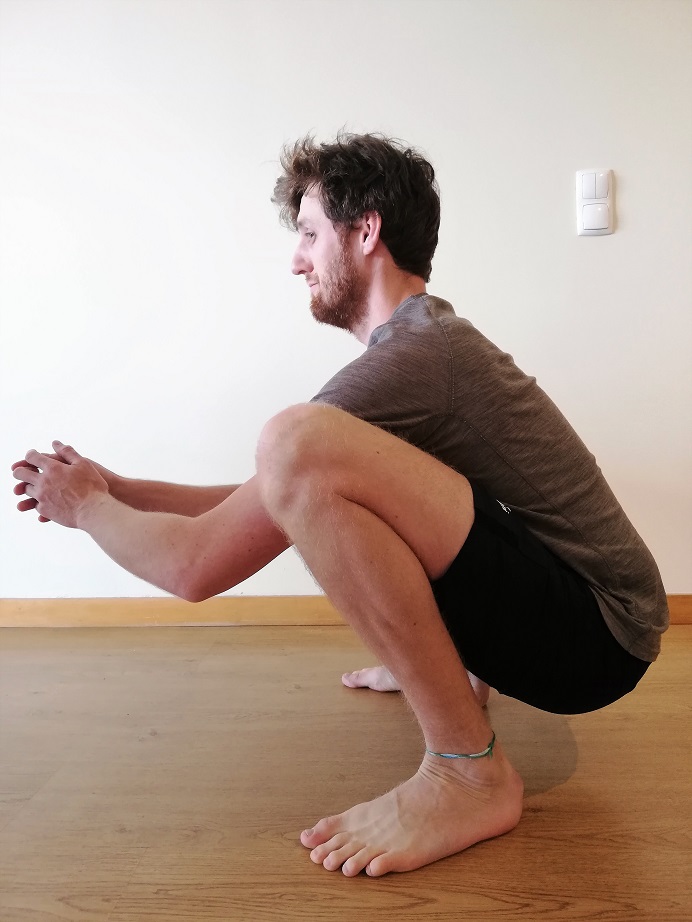
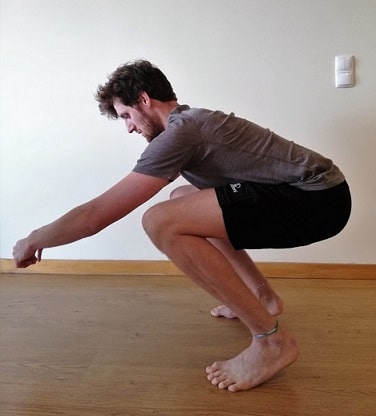
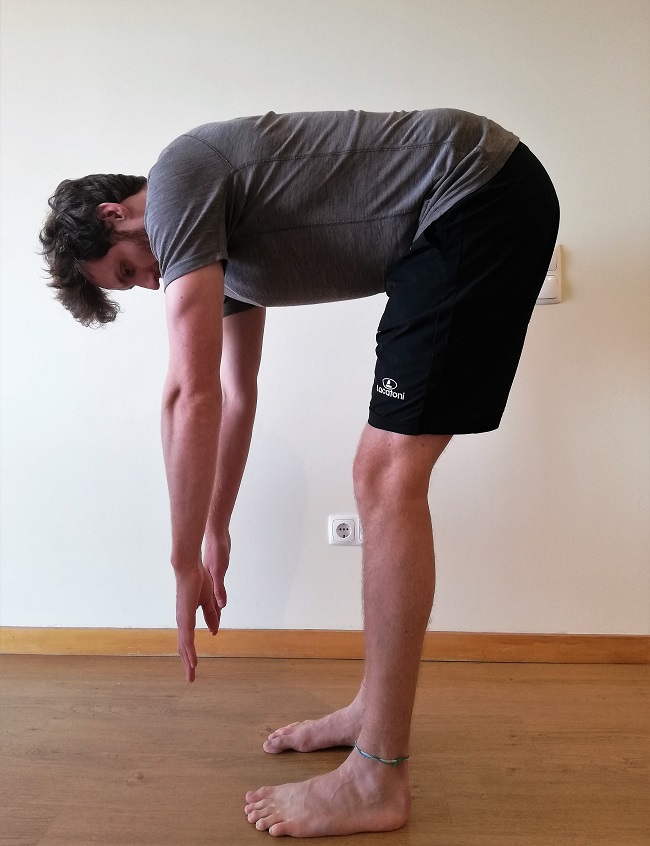
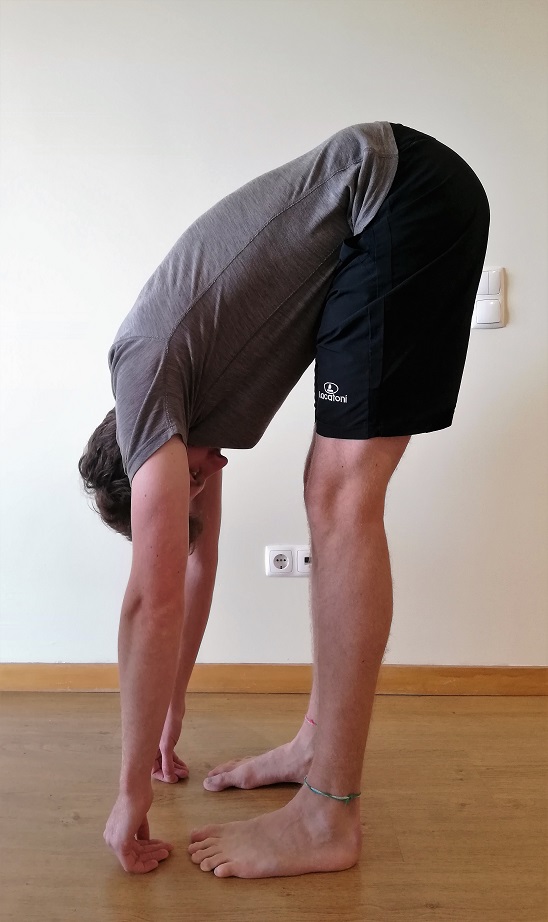
Very well explained! Thank you for sharing. I’ll try all the tips.
Great, let me know if you need any help!